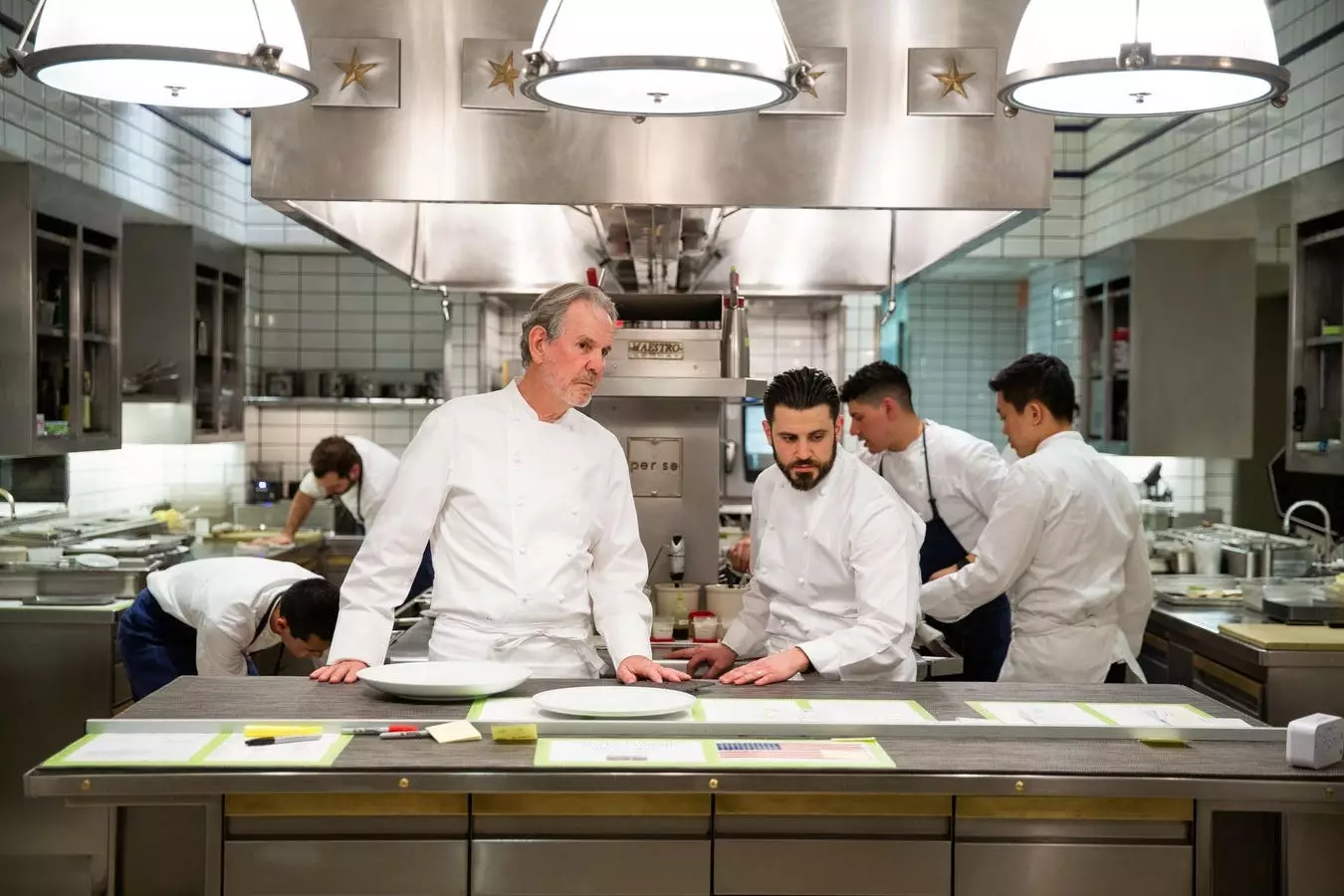Situated on the uppermost floors of the Deutsche Bank Center in Columbus Circle, Per Se is more than just a restaurant—it’s a culinary institution. Opened in 2004 by the illustrious Chef Thomas Keller, Per Se has been lauded as one of New York City’s premier dining establishments. Keller’s approach, reminiscent of his acclaimed The French Laundry in Napa Valley, focuses on meticulously crafted cuisine that celebrates both creativity and flavor. Garnering a three Michelin star rating since 2006, Per Se has etched itself into the annals of fine dining, serving as a testament to Keller’s exceptional vision and culinary prowess.
Yet, while Per Se’s reputation continues to shine brightly, it hasn’t been without its share of critiques. In recent years, some food critics have pointed to the establishment’s elevated prices and perceived outdated decor, suggesting that the restaurant may be drifting into elitism. With its extensive Chef’s Tasting menu priced at a staggering $925 per person, it’s easy to see why some diners might feel alienated. These expenses spark a conversation about accessibility in the high-class dining world, prompting many to question whether luxury establishments like Per Se are becoming overly exclusive, catering primarily to the one percent.
Staff Loyalty Amidst Challenges
One striking aspect of Per Se’s narrative is the retention of its employees, a feat that stands in stark contrast to the industry’s high turnover rates, which can hover around 80 percent. Despite the challenges, including a controversial lawsuit from a past employee, Per Se has fostered an environment where dedicated staff members thrive. Notably, over a quarter of the team has remained with the restaurant for more than five years, which speaks volumes about the workplace culture that Keller promotes.
Take Kimberly Suzuka, for instance, who initially joined as a lead host and has progressed to her current role as guest relations manager—a position crafted specifically for her. Her sentiment about feeling valued at Per Se encapsulates the restaurant’s ethos, where employees are not just staff; they are integral to the establishment’s success. Similarly, executive pastry chef Elaine Smyth attributes her rapid rise in the ranks to the mentorship she received, emphasizing the importance of knowledge-sharing and support within the kitchen. This nurtured atmosphere not only enhances professional growth but also enriches the quality of the culinary experience offered to guests.
A Graduate School for Culinary Talent
Indeed, the environment at Per Se can be likened to an elite culinary school, nurturing emerging talents and shaping them into master chefs. Chad Palagi, who journeyed from commis to chef de cuisine, echoes this sentiment beautifully. His desire to return to Per Se after initially stepping away speaks to the magnetic culture instilled within the team. The restaurant fosters mentorship relationships, enabling chefs to grow through experience and guidance—an enriching facet that sets Per Se apart from many of its contemporaries.
The list of alumni from Per Se is impressive, revealing how the restaurant has influenced the broader culinary landscape. Chefs like Jonny Black, Matt Danzer, and Ann Redding have transitioned their skills to other successful ventures, proving that the nurturing roots planted at Per Se allow for far-reaching visibility and success. This speaks not only to the training they received but also to the enduring values of teamwork and excellence ingrained within Per Se.
Innovation on the Plate
What differentiates Per Se beyond its talent pool is its unwavering commitment to innovation in culinary presentation. The menu evolves daily, dictated by the finest available ingredients, ensuring that no dining experience is ever the same. The precision required for this fluid execution demands exceptional communication among the culinary staff, as they convene nightly to curate dishes that are as delightful to the palate as they are visually striking.
Guests are treated to a unique dining experience with the team’s commitment to using local produce and tapping into the stories behind each ingredient. This dedication to sourcing enhances the dining narrative, emphasizing connection over mere consumption. It is in these gatherings that the culinary team not only fills their notebooks but builds camaraderie, fostering an atmosphere of shared learning—a crucial component that contributes to Per Se’s sustained acclaim over more than two decades.
Driving Excellence with High Standards
Ultimately, Per Se thrives on a foundation of high standards set forth by Chef Keller, encapsulated by motivational reminders that adorn their kitchen walls. The principles of “Sense of Urgency” and “finesse” serve as constant pillars guiding the team in their pursuit of excellence. Yet, the role of general manager Sandra Bohlsen reveals that this quest comes with its challenges. Acknowledging that each day brings its own set of hurdles, she suggests that it is one’s ability to navigate discomfort that leads to true growth—a philosophy that permeates the entire restaurant.
In an ever-evolving world where tastes change with each passing season, Per Se continues to stand strong as both a pioneer and a steadfast custodian of culinary art. Its story, rich with loyalty, innovation, and a commitment to excellence, unveils a unique facet of high-end dining that is as inspirational as it is aspirational.


Leave a Reply